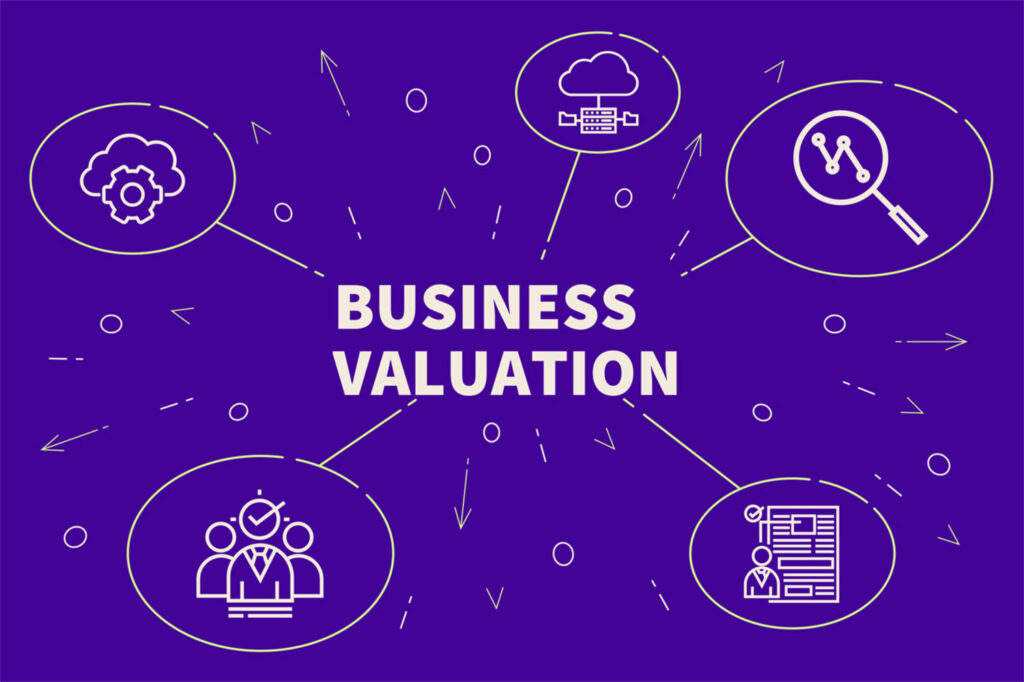In order to sell a company, business owners have to lay a lot of groundwork, including getting a clear sense of what their company is actually worth. As you might expect, determining the value of a business is an exceptionally complicated task. If you think you might want to sell your company in the next few years, developing a Valuation Marketing strategy now will help ensure your business sells for the best price. Having a basic understanding of the three main approaches to business valuation will help guide you as you start thinking about your exit plan and how to market your company to sell.

Approaches to company valuation break down into three main types: the earning value approach, the market value approach, and the asset approach. Ultimately, the value determination tends to be some combination of the three, but no matter how investors assess the value of your business, a systematic approach to marketing your company with eventual sale in mind will help keep the numbers high.
![]()
The Earning Value or Income Approach
In this model, valuation is based on a company’s potential earning. An investor might ask themselves, how much income can I expect from this business on an annual basis? That might seem like a simple matter of looking at annual profit reports. However, how earning potential is determined is a complicated matter. It stems from looking back at annual cash flow over several years and averaging the results, then multiplying that by the “capitalization rate” — a percentage used to calculate the actual rate of return from a business. This model works best for companies whose earnings have remained consistent over time.
On the other hand, for companies that have been steadily growing, investors may base their estimates on the average trend of earnings, trying to predict future earnings based on past growth. This calculation is offset by risk factors such as customer loyalty and the likelihood of changes resulting from new ownership — another complicated calculation of less tangible goods.
![]()
The Market Value Approach
The market value approach for business valuation operates on a comparison model: what are other businesses similar to yours worth? This approach involves market research, looking into what similar businesses have sold for and thereby attempting to determine a fair market price. This approach can be tricky, since information about sales prices for sole proprietorships isn’t always publicly available. This model also requires a large enough pool of comparison. If your business is particularly unique, then this model won’t very effectively apply. On the other hand, if there’s a reasonable amount of market saturation and a number of companies that have changed hands in recent years, research into sales prices can give you a healthy sense of what your company might be worth.
![]()
The Asset Approach
The asset approach to business valuation takes a sort of accounting perspective by factoring a company’s resources against its costs. In the more grim version of this model (liquidation), the total comes from adding up what the company would be worth if everything were just sold off — hopefully not the model you want used for your thriving business! In the more common asset approach model (the going concern asset-based approach) where the assumption is that the business will continue under new ownership, the company’s assets are tallied against the liabilities to come out with a relatively-straightforward net worth.
With this approach, the question is: how much would it cost to set up a similar business that yields similar returns? Again, while this may seem straightforward, figuring out an appropriate value for a company’s assets can be quite complicated. While things like office furniture and computer equipment might have a clear price tag, what about intellectual property and trademarks? Those intangible goods are harder to assess and exceptionally valuable.
![]()
How Business Valuation Marketing Will Help
Ultimately, selling your business for the best possible price requires implementing a long-term (2 years or more) marketing strategy. It might seem counter-intuitive to invest more in an asset you’re planning to sell, but the increased rate of return can be significant — after Glassdoor refreshed their brand in 2017, they sold for 20% more than previous valuation prices! (In this case, an additional $200 million). Improving your company’s website design and SEO will attract more customers to improve your current earnings as well as your earning potential. Showing growth over time will add considerably to an income approach valuation. Similarly, clarifying your voice and visual identity will guarantee you stand out in the crowd. It will also ensure that investors taking a market value approach will measure your business against worthy competitors. Implementing a content marketing strategy well in advance of sale will mean you have an established online presence for investors to look to as evidence of a thriving business. That kind of market presence over time is an asset that money can’t buy!



